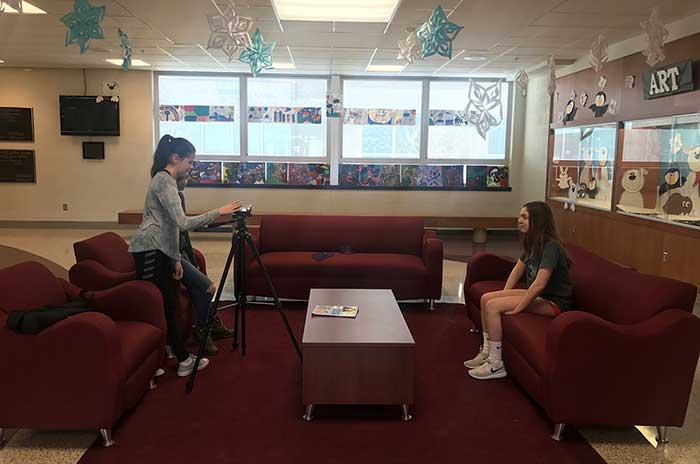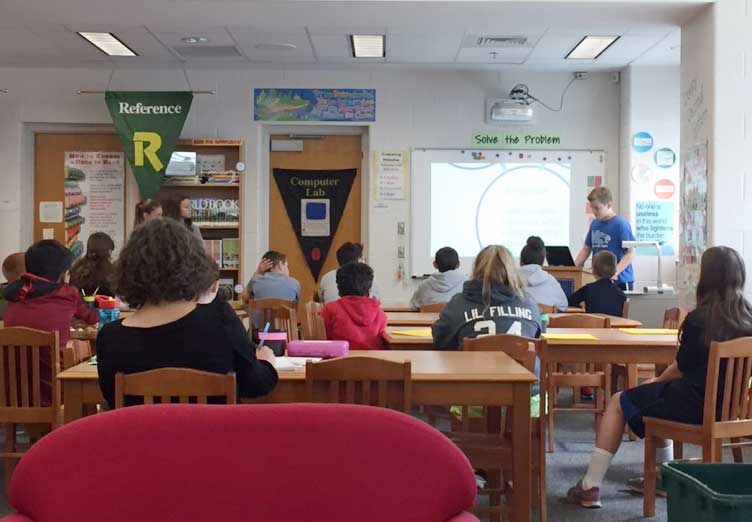Helping Students Find the Truth in a Fake News World

By Paul Sanfrancesco, Director of Technology at Owen J. Roberts School District (PA)
“I'm afraid that in slipping from truth where one least ought to slip, I'll not only fall myself but also drag my friends down with me." – Plato, The Republic, 451a
These words, written more than 2400 years ago, are as relevant today as when they were first stated. Given the current concern about “fake news,” perhaps more than ever, truth can be difficult to ascertain for educators and even more challenging for students. Our responsibility, as educators, is to lead students to discern truth.

So what can a teacher do who wishes to guide students in seeking truth in electronic media? Here are ideas that can be tweaked to meet the needs of a variety of students:
- Article or Editorial: Check to see if the selection is supposedly written as a factual article or as an opinion. If it is an article, it contains facts that can be verified. If it is an opinion, it is what the writer thinks personally. There is no need to argue over opinions; everyone has one or more of those.
- Many Minds: Facts can be verified by multiple sources. Therefore, if a selection purports to report facts, the same information should be available through multiple sources. In how many other sources can you find the same information?
- K-W-L: After reading a selection, create a K-W-L chart. List facts in column 1 – what you know to be true because the facts can be verified elsewhere. List questions in column 2 – because you want to learn more about them. List look-fors in column 3 – because you doubt their veracity and need to look for more information to determine fact vs. opinion.
- Take Me to Your Source: What is the source of the selection? If it’s from Wikipedia, the credibility of the source may be different than if it’s from another source.
At the Owen J. Roberts School in Pottstown, Pennsylvania, students follow stories as “journalists” to see how the process works, and report their findings using hashtags they create. Other students can use the hashtags to add their perceptions to these news stories.

Our superintendent, Dr. Susan Lloyd (@ojrsd_supt), also models accurate reporting and encourages everyone, including students, to follow her on Twitter for the real updates on the district. She also sends out a weekly blog to control rumors and fake news, as well as to promote positive stories about the district.
Here are a few other ideas your school can use to help students learn how to better tell fact from fiction online:
Tools and ideas to transform education. Sign up below.
- Have students create a social media profile for a historical figure. What would they be snapping? What hashtags would they use? What would be on their YouTube channel?
- Host a parent education series on many technology topics, including fake news and social media. Have students lead the training.
- Create a private online group chat that includes principals, directors of technology, and teachers, and have the participants share their ideas and best practices in using social media.
Educators are in the unique position to help their students become more savvy consumers of online information. Through classroom lessons and conversations, students can learn to disseminate fact from fiction, to weed through the vast amount of data on any given subject to find the most accurate truth possible, to recognize the subjectivity and prejudice that exists in much of this information, and eventually arrive at their own opinions on that subject. This is a life-long skill that is a crucial foundation to any college or career path they might choose.
The Kindness Rock Activity

Kindness can often get lost in social media debates. Often, opinions are planted firmly in black/white terms and the nuances of in-person debates can be lost. To remind students that behind every opinion there is a real person with real feelings and varied opinions, students at French Creek Elementary (PA) launched the “Kindness Rock” project. Students paint rocks and write kind and inspiring phrases on them. Each completed rock is then passed along to someone else, left somewhere for someone to find, or kept for themselves. The project includes:
- A mini QR code and/or website link painted on the back of each rock. The QR code and website will link to an Instagram account that students create and populate with new content.
- An anonymous Instagram account where people can post photos of Kindness Rocks that people find in and around the community.
Teaching in a “Post Truth” World By Steven Baule, Superintendent at Muncie Community Schools, Indiana
As it appears that we still live in a “post-truth world,” according to a recent Forbes article, we need to learn that expertise and authoritative sources no longer always hold sway. Educators need to place even more focus on educating students about how to critically evaluate information sources. Some good resources include: Kathy Schlock’s Guide to Everything, which includes critical evaluation resources; this recent NY Times guide for evaluating news sources for teachers; this 2015 Fake v. Real News post; and this TEDEd lesson. ISTE’s Standards for Students includes the critical evaluation of materials in several places.
We are often frustrated when others cannot understand our perspective, but as our world becomes more interconnected, it becomes even more essential to learn to critically understand the perceptions and biases of others and try to make decisions based upon facts. Take, for example, one really simple “fact,” which can be interpreted in multiple ways: Shortly, we will embark on the year 2018, according to my Google Calendar. However, many people around the world would argue that 2018 is the wrong date. The Japanese are currently in Heisei 29, based upon the reign of the current emperor. The Korean calendar is in year 4350, and the Islamic calendar is in year 1439. The Buddhist calendar currently shows 2561. That is without even considering the issues surrounding the use of Anno Domini (AD) vs. Common Era (CE). As Mrs. Cooper (Sheldon’s mom) on “The Big Bang Theory” once declared, in response to Sheldon’s statement that evolution was a fact, “AND THAT IS YOUR OPINION!” As facts are becoming harder to measure and articulate, let’s do our best as educators to ensure that our students have all of the critical tools they need.
